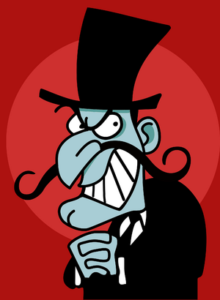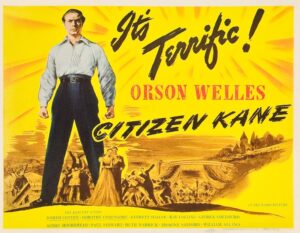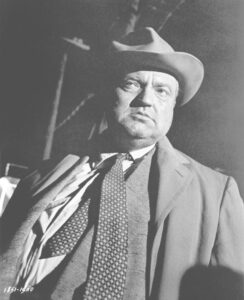by James Scott Bell
@jamesscottbell
For years, classic radio audiences thrilled to this opening: “Who knows what evil lurks in the hearts of men? The Shadow knows.” This was followed by a sinister laugh. (Orson Welles played the role for a couple of years.)
The Shadow was a good guy, a vigilante who stopped bad guys. It was the secret identity of one Lamont Cranston, a wealthy young man who spent time in the Orient and learned a hypnotic power “to cloud men’s minds.” Thus, he could make himself “invisible” to the criminals, who could only hear his haunting voice.
There’s also an invisible part of every novel you write. And once again, the Shadow knows!
I refer to what I call the “shadow story.” That’s what’s happening off the page. Meaning that when a scene is unfolding before us, characters who are not in the scene are still active. They are reacting to plot developments, and planning and carrying out counter moves.
You may choose not to know about any of that, but in your story’s world, it’s happening nonetheless.
Why not harness its power?
When you identify the shadow players and track their moves, it offers abundant fodder for shocks, red herrings, and twists in the plot that is “onscreen.”
Now, I know many a successful mystery writer has “pantsed” a plot. That was Sue Grafton’s method, though each day she “interacted” with her unfolding story by writing notes to herself before she worked on the WIP. She’d ask questions and list possible answers. In other words, she was developing the shadow story alongside her developing plot.
Another well-known “discovery/intuitive” mystery writer said he will pants along and find himself writing something that comes to him on the fly. For instance, a potted plant in a fancy vase will jump into his imagination, and he’ll put it in, not knowing how or when it would pay off.
This author also admits he’s had many novels that stalled and were discarded. Yet he still produces successful books.
Be that as it may, I’ve found that plotting the shadow story early is indispensable in my own writing. Knowing who the villain is from the jump, I can drop in all sorts of happenings that deepen the mystery and how it will all be wrapped up at the end.
As I plot the book, I include scene squibs that won’t show up in the finished product, but are there to suggest mysterious happenings that won’t be explained until the end.
That’s one of the nifty things about Scrivener.
Scrivener lets you write a scene (or chapter) and record a summary of it on an “index card.” You can look at the cards on a corkboard, and also in the outline view.
Further, you can color code the cards. I have colors for the main plot and subplot(s).
I also have a color for the shadow story. These are index cards with squibs on what the offscreen characters are doing. In the “Inspector” pane I hit the “Metadata” tab, then uncheck the box that says “Include in Compile.” That way, when I compile the manuscript for editing, the shadow story doesn’t show up in the manuscript.
But at any point I can print the outline view, with the shadow story scenes showing. This gives me a nice overview of the proceedings, and I can tweak things and get ideas for upcoming scenes.
Here’s how it looks in the Binder View (click to enlarge):
And in the Outline View (click to enlarge):
As I write, one of my scenes might need a twist or surprise. I can then turn to my shadow story outline, and add to it, and use that for the twist.
Yes, there are many ways to write a novel. I offer the shadow story as a tool, and a powerful one. If you use it, as you write feel free to hum the old standard, “Me and my shadow/Strolling down the avenue…”
What about you? Do you ever give thought to what characters are doing off-page?






